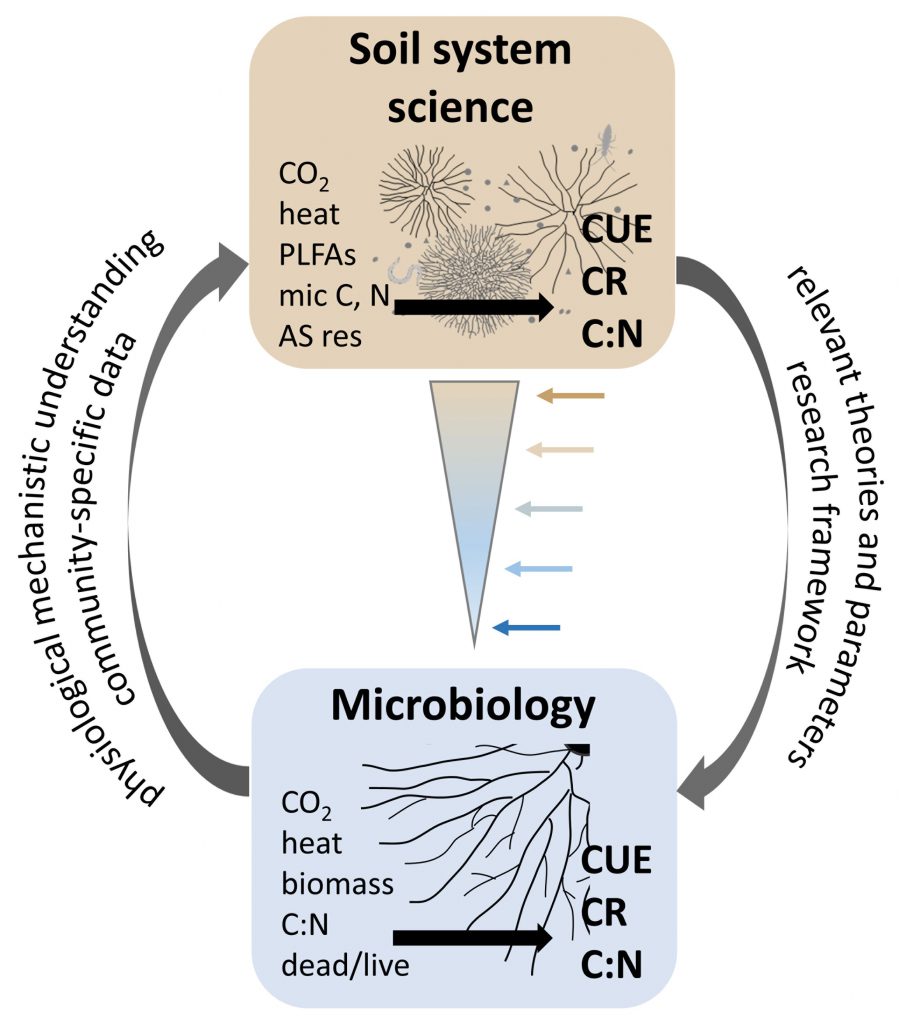The significance of saprobic fungi for energy and matter turnover under varying substrate conditions – from individuals to soils

This project aims to elucidate the role of saprobic fungi in soil energy and matter turnover, with a special focus on the effects of substrates varying in energy content, complexity and nitrogen (N) availability. Focusing on the physiology of an individual microbial group in detail allows to provide mechanistic insights on soil C and energy cycles, that are relevant to improve our understanding of soil biogeochemical processes and model predictions. Whole soil analyses allow to monitor the relevant fluxes of C and energy and are crucial to understand process rates, however, microbial activity can only be addressed indirectly via biochemical markers. Therefore, this project additionally analyzes physiological responses in fungal individuals and communities under controlled conditions, which then will be experimentally scaled up towards complex soil environments.
Fungi are special among microorganisms by their mycelial growth form, that allows for highly efficient exploration in heterogeneous soils, while the enzyme capacity of hyphae enables the breakdown and uptake of complex C substrates. Thus, saprobic fungi play an essential role in the C cycle, not least because of their contribution to C sequestration. Here, the experiments are designed to incorporate the special characteristics of mycelial development, in respect to recycling mechanisms, mycelial connections of resource patches and its composition of active, inactive and dead hyphal portions (necromass). The addressed hypotheses focus on the effects of substrates differing in energy content and complexity on fungal growth and activity measured by parameters relevant in soils, the respective impact of N availability, the role of fungi for C sequestration under varying substrate conditions and species-specific variations in traits related to C cycling and thermodynamics. This knowledge will subsequently contribute to the main hypotheses of the priority program Soil Systems, adding specific insights for saprobic fungi.
Link to English scientific abstract
Link to German scientific abstract